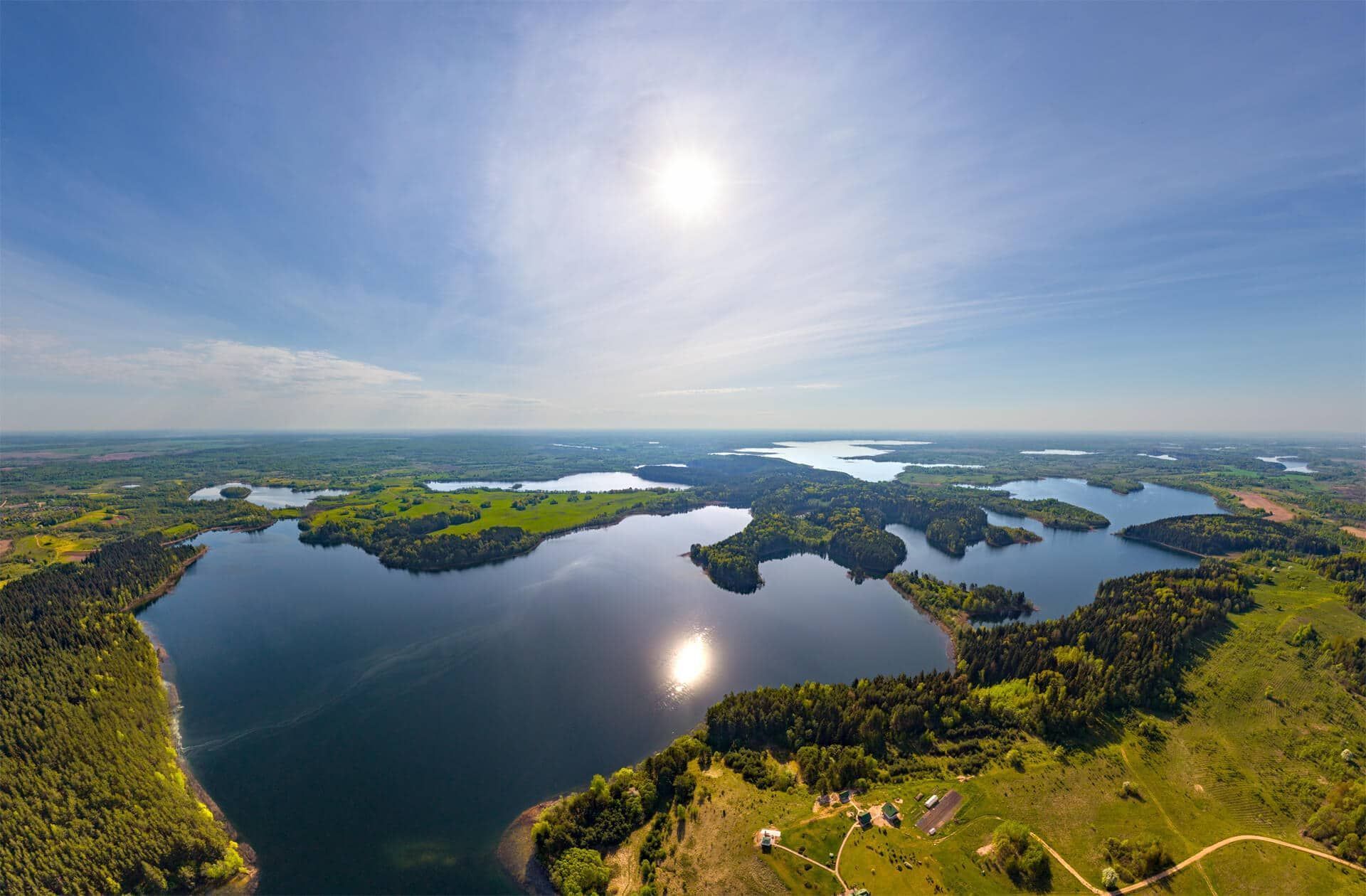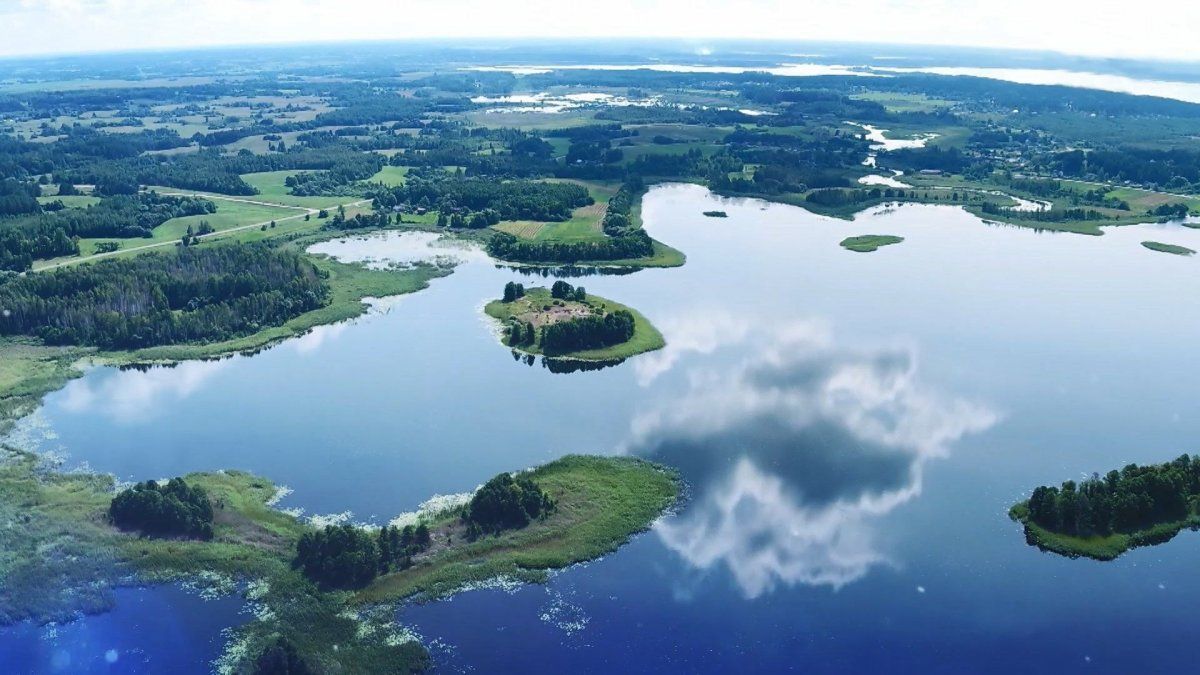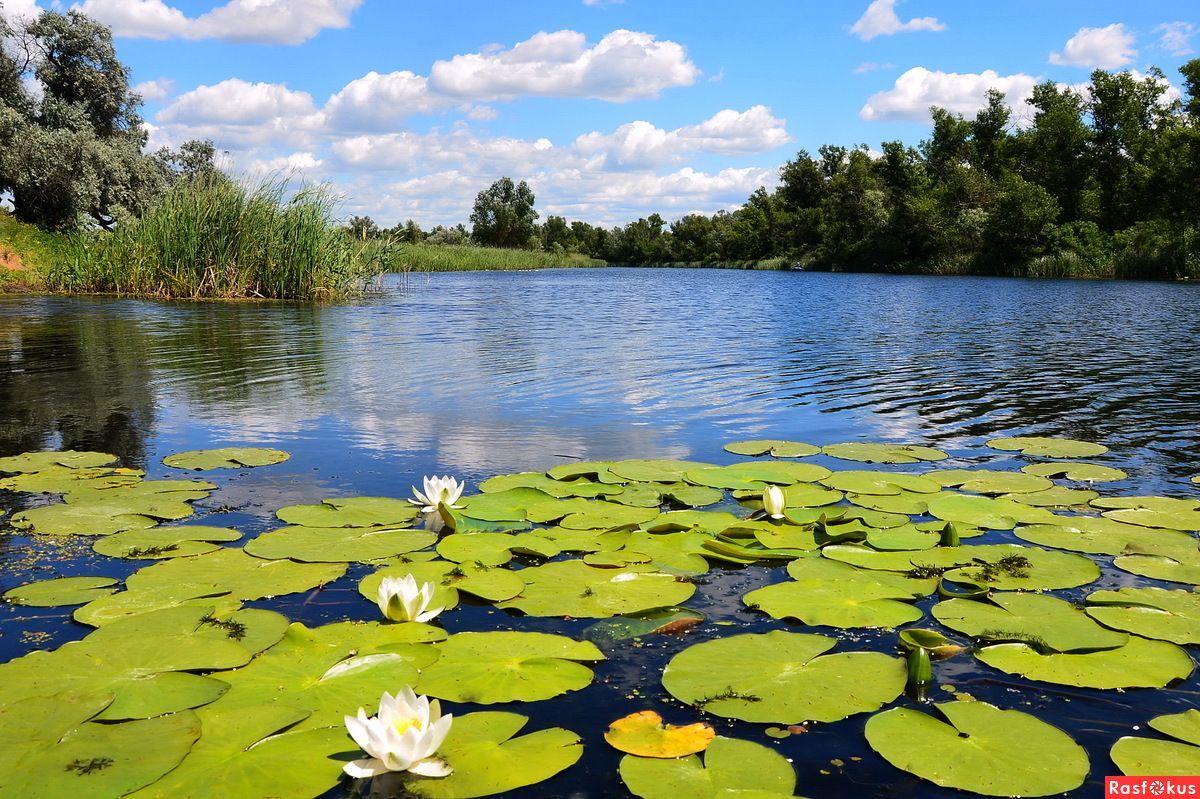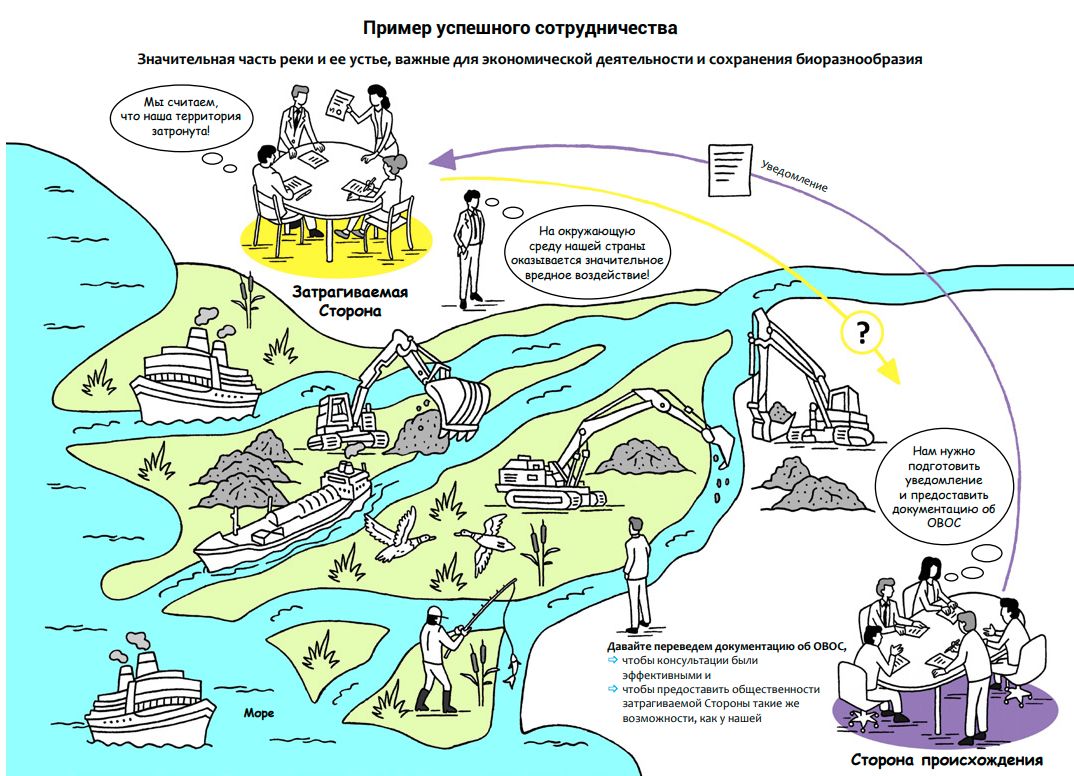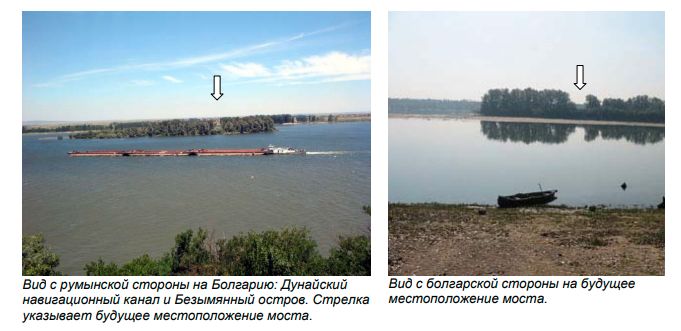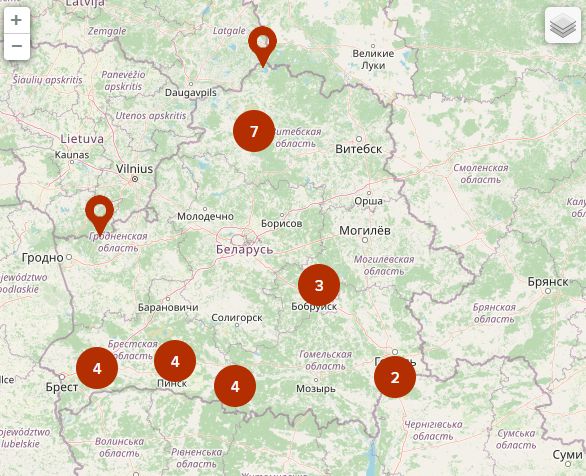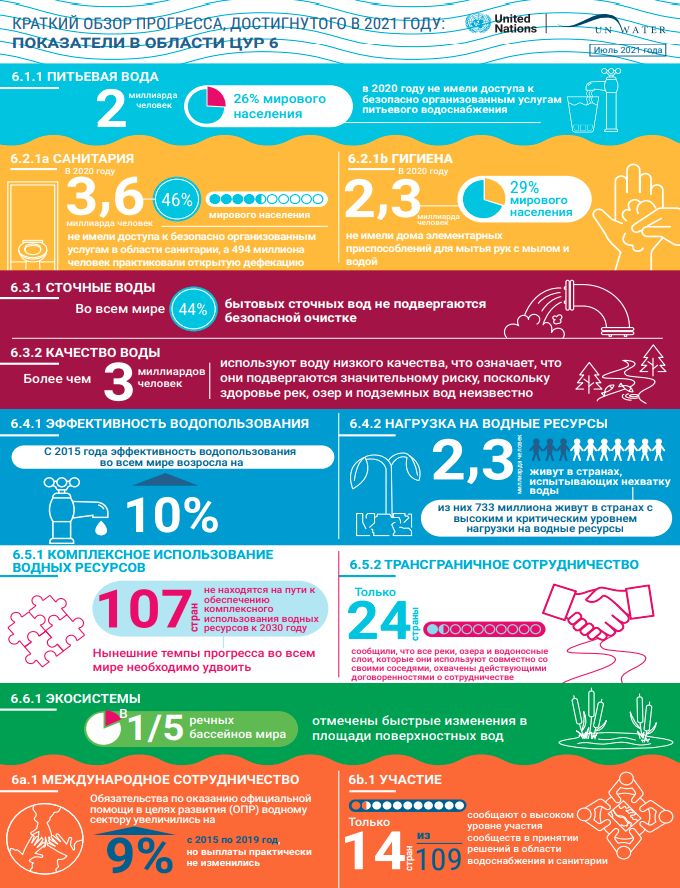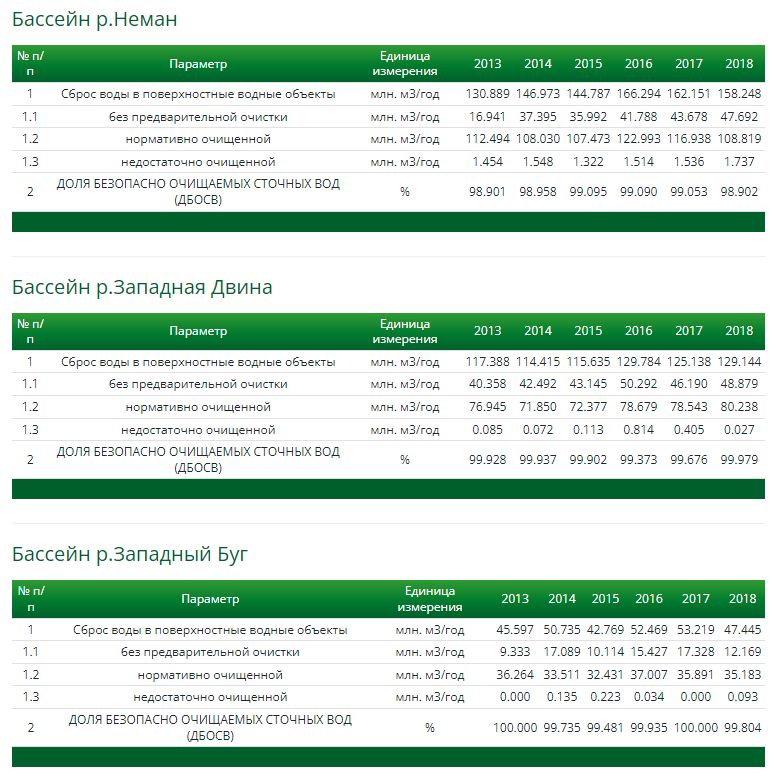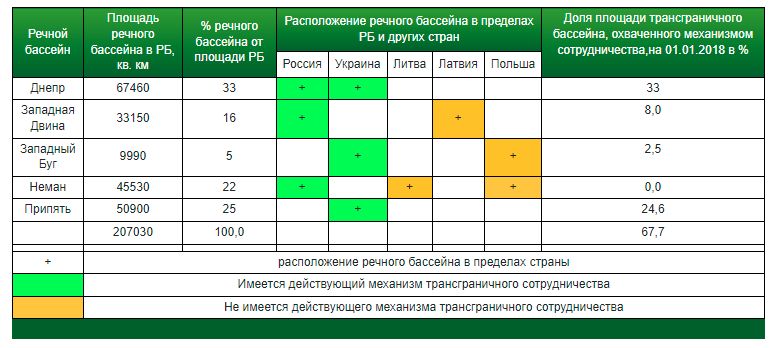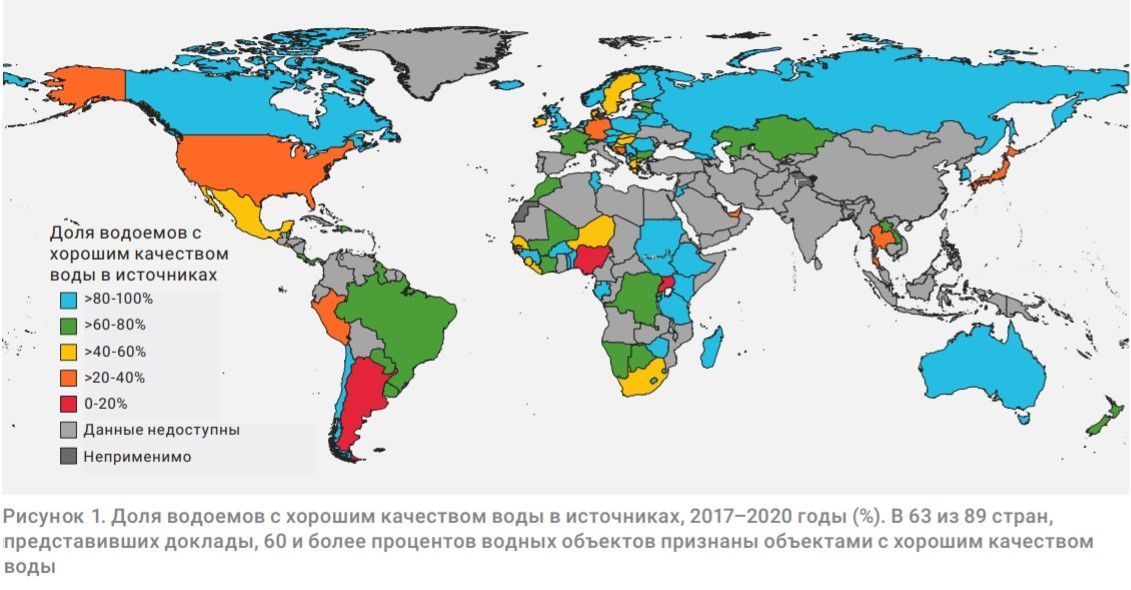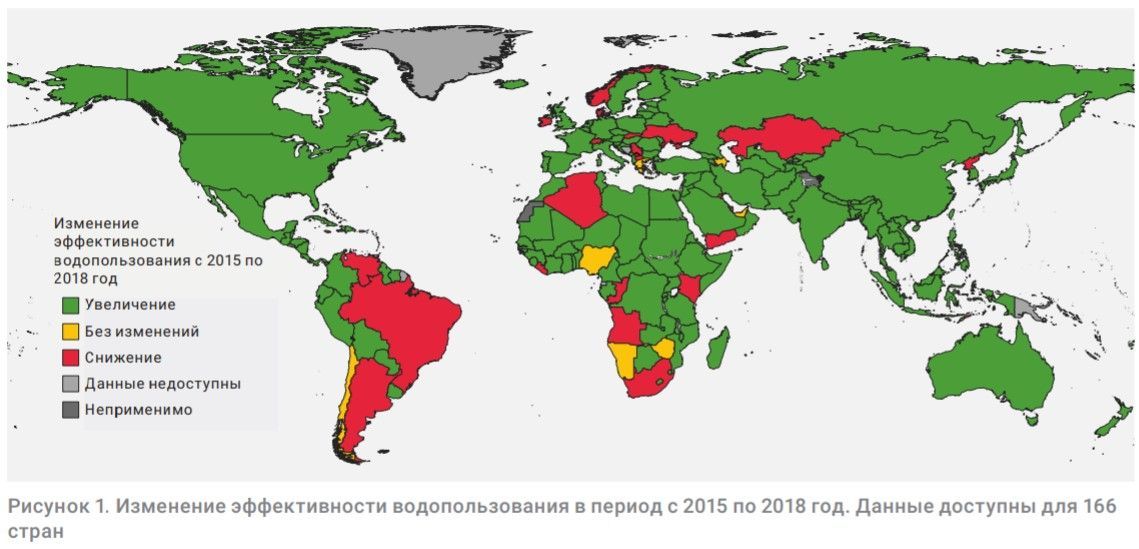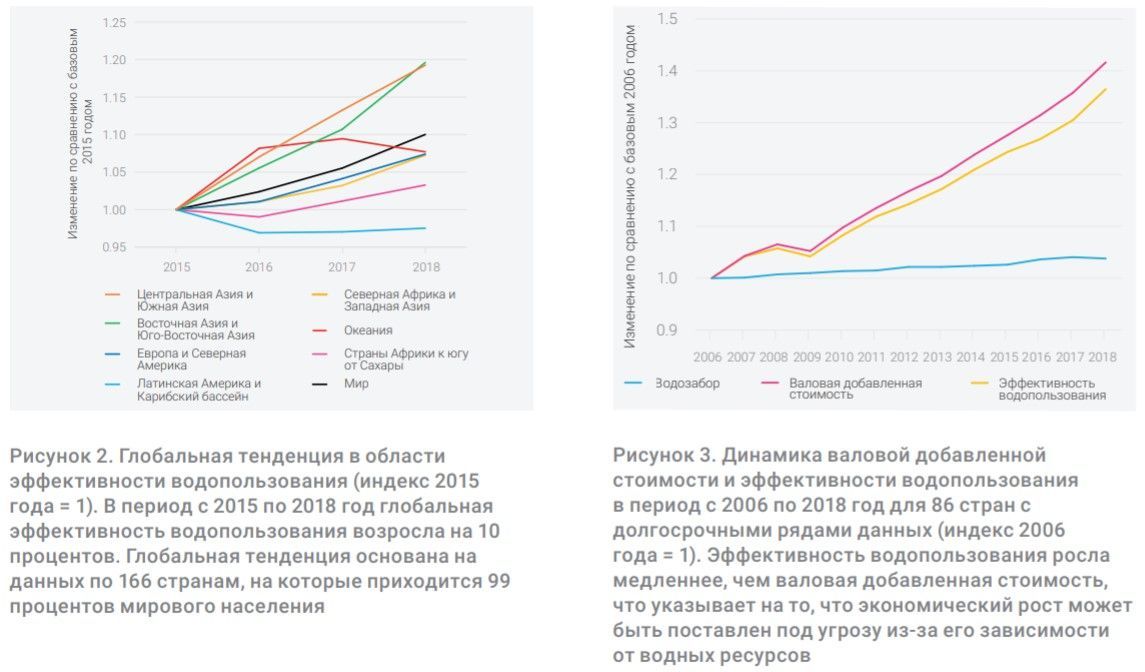Analysis of water management legislation: what should Belarus learn from the world?
- Topic: Rivers and lakes
- Authors: Bahna
- Date: 01.02.2022, 07:08
Today the protection and rational use of water resources have become a focus of worldwide attention. Their current state shows that the measures taken in the context of constant threats of natural and anthropogenic nature are insufficient. In this article, we will explore how the water legislation of Belarus responds to these challenges.
The growth of the world economy, a significant increase in the population of the Earth and, as a consequence, increased anthropogenic pressure on ecosystems as a whole and water bodies, in particular, have led to an increase in the global water crisis. It has become clear that it can be countered only through joint efforts of various international actors: states, organisations, public associations, and citizens. But most importantly, attitudes towards the protection and use of water resources, in many cases still dismissive, must change.
What problems does our water legislation address?
It may seem that Belarus has a fair share of water resources and there is nothing to worry about. However, the availability of water resources is limited by natural and environmental factors. For example, the main reason for the deterioration of water quality in our rivers is pollution. The number of sources of pollutants is increasing year by year. Another serious problem negatively affecting water bodies is the bog reclamation.
Belarus, like many other countries, has taken up the task of improving national water legislation to ameliorate the situation. We have accumulated an impressive database of draft laws regulating the protection and use of water bodies. It includes the Constitution of Belarus, codes, laws, decrees, as well as international agreements, technical protocols, strategies, river basin management plans, by-laws (national standards, technical codes of common practice, environmental rules and regulations) and other technical legal acts.
However, there is a problem — the data in them is outdated and irrelevant, the goals and objectives are copy-pasted from the old documents without taking into account the current situation, the wording of activities is vague and unspecific.
“It is surprising that the strategic goal of water resources protection and efficient use, outlined in the National Strategy of Sustainable Socio-Economic Development of Belarus 2020, adopted in 2004, has not changed at all, compared to how it was phrased in the document seven years ago”, Yuri Lepeshkov, a leading researcher of the Department of State-Run Construction and International Law Research, candidate of legal sciences, associate professor, points out in the article “Protection and efficient use of water resources as an important component of sustainable development”.
Even today, most Belarusian legal texts rarely mention the need to protect water as a sanctuary for biodiversity. However, many focus on the use of rivers in industry and agriculture, the development of tourism and recreation, water transport and hydropower.
Key international water treaties
A significant contribution to the formation and strengthening of the legal regime for the protection and conservation of the Earth’s waters, including in Belarus, are the adopted international environmental treaties. Clear legal obligations have been formulated for the member countries.
Among the fundamental ones, experts highlight the Dublin Statement on Water and Sustainable Development approved at the International Conference on Water and the Environment on 31 January 1992. It is noteworthy that it considers water as an exhaustible and vulnerable natural resource that is at the same time an economical good.
The Dublin principles were subsequently reflected in international documents defining the framework for the sustainable development of states:
• Agenda 21, adopted by the UN Conference on Environment and Development;
• the World Summit on Sustainable Development documents (the Johannesburg Declaration on Sustainable Development);
• UN General Assembly Resolution 71/222 ratified on 21 December 2016; it proclaimed an international decade of action “Water for Sustainable Development” (2018-2028);
• UN General Assembly Declaration of 25 September 2015 “Transforming our world: the 2030 Agenda for Sustainable Development”, which introduced 17 Sustainable Development Goals.
We have already mentioned that the draft Water Strategy 2030 of Belarus includes the Sustainable Development Goals, the sixth of them reads — Ensure availability and sustainable management of water and sanitation for all. The website of the Environmental Portal of the Republic of Belarus features the calculation of some indicators of targets 6.3-6.5 necessary for the implementation of the goal.
Belarus has concluded intergovernmental agreements with all neighbouring countries in the field of transboundary cooperation. On the Environmental Portal, one can find the calculation of the share of the transboundary water basin area which has a valid mechanism of such cooperation in place — indicator 6.5.2. However, it was met only in 2018.
No less important key international treaties defining the legal regime of large and small rivers, according to experts, have also become:
• UNECE Convention on the Protection and Use of Transboundary Watercourses and International Lakes of 17 March 1992 (hereinafter the Helsinki Convention);
• Protocol on Water and Health to the Helsinki Convention adopted on 17 June 1999.
Belarus fully ratified the Helsinki Convention on 27 August 2003. It enshrined key principles that later formed the basis of national water policies in many countries, including in Belarus:
• the precautionary principle, according to which measures to prevent the possible transboundary impact of the diversion of hazardous substances become urgent;
• the “polluter pays” principle;
• the principle of integrated water resources management, taking into account the needs of future generations.
The Helsinki Convention establishes another fundamental principle of water law — basin management. It also commits parties to harmonise policies and strategies, to hold cross-country consultations to exchange information, to promote sustainable water management and to develop systems for wastewater discharge permits.
It is also important that this document sets out commitments to use the best available technologies, to organise joint monitoring and assessment of the state of the sites, and to inform the public about transboundary waters and the measures being taken to preserve them.
The participation of citizens in decision-making on water bodies is enshrined in several other international treaties, as are the obligations of parties to apply environmental management tools — environmental impact assessments (EIAs).
The most important of these is the Convention on Environmental Impact Assessment in a Transboundary Context of 25 February 1991 (hereinafter referred to as the Espoo Convention). Our country joined it on 20 October 2005. The agreement encourages states to notify and consult each other at an early stage of planning for major projects that could have a significant adverse impact on the environment, in particular on water bodies.
• There are already several examples of such cooperation on the convention’s official website: the construction of an offshore sealine to transport hydrocarbons between Croatia and Italy, the Chancy-Pougny hydropower plant (France, Switzerland) and the bridge over the Danube between Vidin (Bulgaria) and Calafat (Romania).
Among international treaties, the Ramsar Convention on Wetlands, mainly as a waterfowl habitat, occupies a special place. It was concluded in Ramsar in 1975, and Belarus joined it on 25 August 1991. At present Belarus has 26 wetland areas of international importance (Ramsar Sites), with a total surface area of 777,895 hectares.
“International practice has accumulated considerable experience in the regulation of cooperation on protection and rational use as well as management of water resources based on universal and regional treaties, agreements, conventions, protocols and other legal forms (through the adoption of declarations, plans, programmes, etc.) with active use of various kinds of institutional mechanisms, the role of which cannot be overestimated. However, achieving the goals of all these documents is impossible without their effective national implementation,” stresses Yury Lepeshkov.
Water legislation in Belarus: conclusions and recommendations
To implement advanced international environmental standards into Belarus’ legislation on the protection and use of small and large rivers, a project has analysed the legislative frameworks in various countries and developed proposals for improving our water laws.
But all experts insist: only a comprehensive approach to solving the problems of pollution and unsustainable use of water bodies will help to achieve results in Belarus. Single bans and restrictions do not work.
As we have already said, Belarus’ water legislation consists of a significant array of documents. However, all of them are drafted based on the Water Code of 30 April 2014 and other acts adopted to develop it.
It contains several legal measures for the protection of water bodies, including those aimed at preventing pollution. The Code sets out today’s most important principles of basin management of water resources. It is these that stand at the heart of the successful execution of all the tasks set.
“One of the possible ways to increase the efficiency of water resources use is water management at the basin level. Abroad, it is called integrated water resources management (IWRM) in the basin. It is regrettable to note that despite the available justifications, the proposals by water scientists in Belarus regarding the organisation of basin management of water resources use and protection have not found their practical implementation. This is primarily since there is still no clear-cut unified state system of IWRM built from start to finish with regard to river basins. Therefore, no one can actually implement the IWRM plans developed by foreign and Belarusian experts on international projects in transboundary river basins”, a well-known hydrogeologist and ecologist, water resources specialist, Doctor of Engineering, professor Mikhail Kalinin evaluated the situation in the country. He expressed his opinion in the article “On the organisation of basin management with regard to use and protection of water resources in the Republic of Belarus”, published by the International Sakharov Environmental Institute.
The Water Code also defines basic concepts and stipulates provisions for river basin management plans (RBMPs) and river basin councils. But according to experts, a comparative analysis of our legislation and international approaches has shown that there are significant discrepancies in the implementation of the documents.
For example, we have a requirement to produce RBMPs only for five rivers (Dnieper, Western Dvina, Western Bug, Neman, Pripyat), while in Europe they are developed for all river basins.
The Belarusian document also lacks an effective system of competent bodies involved in basin management in the context of the administrative structure of the country. Nor is there a clear separation of duties between them and the Ministry of Natural Resources.
There are also problems with determining the quality of water bodies and their monitoring.
Experts note that the approaches in our country differ significantly from those in Europe both in terms of types of monitoring (supervisory, operational, investigative monitoring are generally applied in the EU) and in terms of their structure and periodicity. Belarusian legislation does not contain the category of heavily modified surface water bodies.
Therefore, they recommend enshrining all necessary concepts in the Water Code and refining the provisions governing the implementation of surface and groundwater monitoring in Belarus.
The practice of compensation for environmental damage caused to water bodies is unclear as well.
The principle of payment for water use and damage compensation is captured in the Water Code. However, the rates of environmental tax for wastewater discharge enshrined in the tax legislation depending on its volume rather than on the qualitative composition of substances do not fully comply with the “polluter pays” principle.
In our legislation:
• the tariff calculation method is used, which is not efficient enough to assess the real damage to water bodies;
• priority of environmental damage compensation in kind is not enshrined;
• the rule of the elimination of environmental damage to water, achieved through the restoration of the object to its original condition through “primary, additional and compensatory restoration”, is not applied;
• the situation when a polluter fails to fulfil their duty to compensate for damage is not regulated;
• there are no provisions that ensure the prevention of environmental damage.
Therefore, it is recommended to develop economic incentives aimed at reducing discharges of pollutants in wastewater, including rules for determining environmental tax rates for wastewater discharges depending on the mass of pollutants in the wastewater. They should be introduced consistently and enshrined in Belarus’ Environmental Protection Act.
Pollution of water bodies as a result of agricultural activities is a pressing problem in Belarus.
Therefore, the Water Code includes a significant array of requirements for economic agents aimed at preventing water pollution, including those stipulated by legislation on land reclamation. Certain instructions are captured in technical normative legal acts in the field of environmental protection and nature management, for example, in obligatory for observation environmental rules and regulations.
• However, analysis of our legislation on this problem leads to the conclusion that the system of such legal measures is significant, but not effective enough due to organisational (ineffective control, inaction of supervisory bodies with respect to holding state-run economic entities liable) or technical (insufficient efficiency of wastewater treatment at municipal sewage treatment facilities) reasons.
Therefore, experts recommend making appropriate amendments and additions to the Water Code. To prevent nitrates from agricultural land to groundwater and surface water the approach of the Directive 91/676/EEC should be taken into account:
• identify areas that cause significant nitrate flushing;
• identify the areas most susceptible to nitrate pollution;
• develop a code of best agricultural practices;
• monitor nitrates in water bodies.
“In the current system of water use management in Belarus, hardly anyone is directly responsible for irrational use of water resources. In effect, only the policy of combating the consequences, rather than the causes of pollution, is implemented,” Mikhail Kalinin stresses.
Ironically, the Water Code does not mention sustainable development at all. And these are not the only gaps, as expert analysis of our legislation shows.
“To preserve and reproduce water resources, all water users, supervisory and management bodies must have the same economic interest — to use water as little as possible and pollute it as little as possible,” Mikhail Kalinin succinctly outlined the main message.
Featured photo — cdn.allwallpaper.in
Bahna’s materials may only be reprinted with the written permission of the editorial board.
